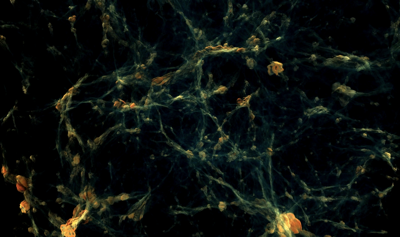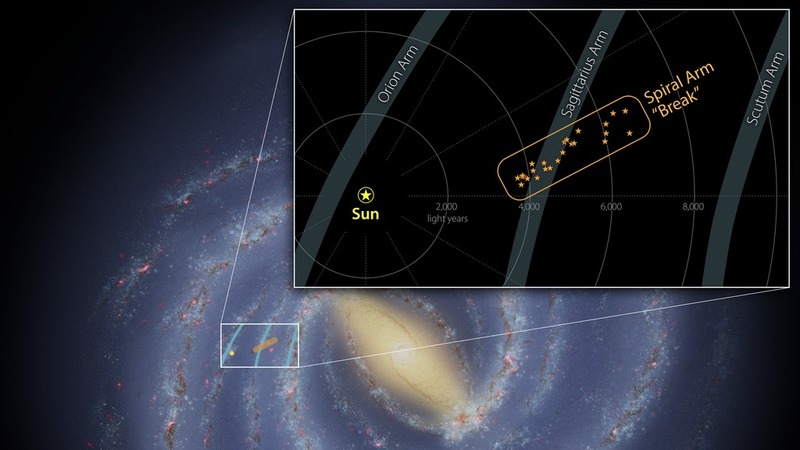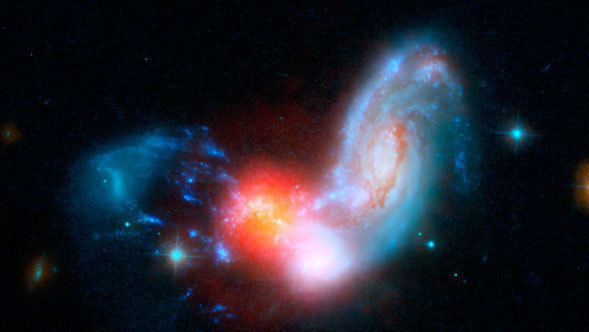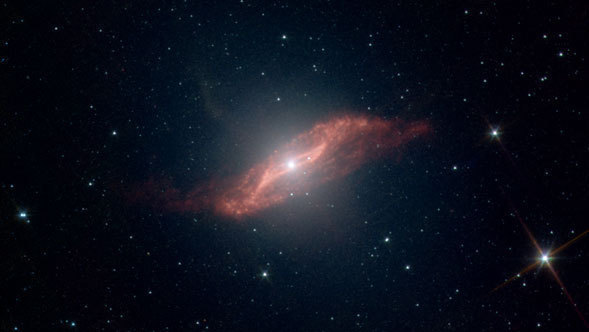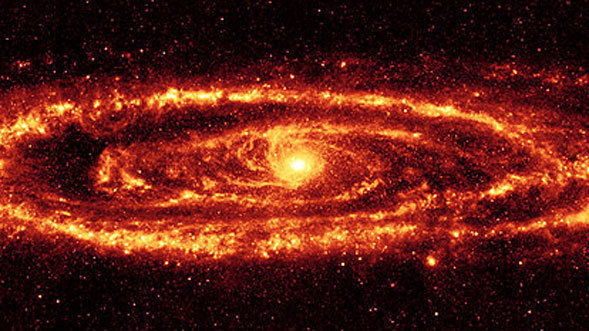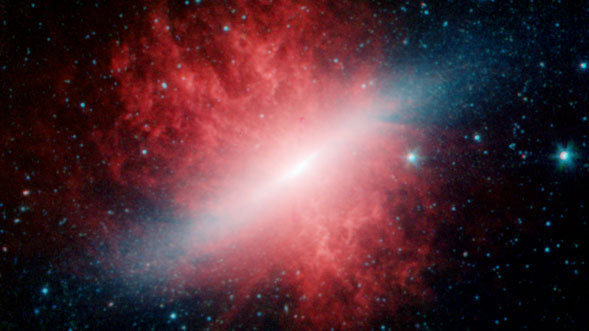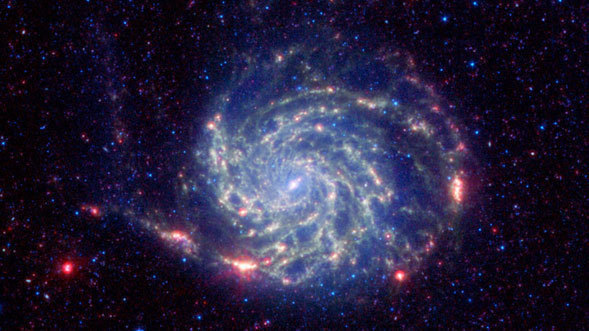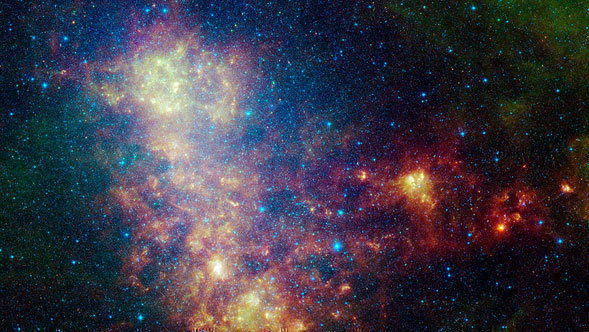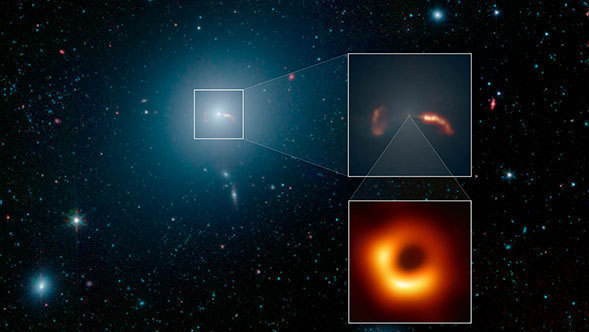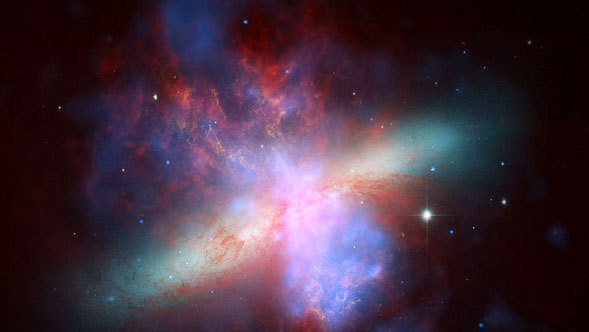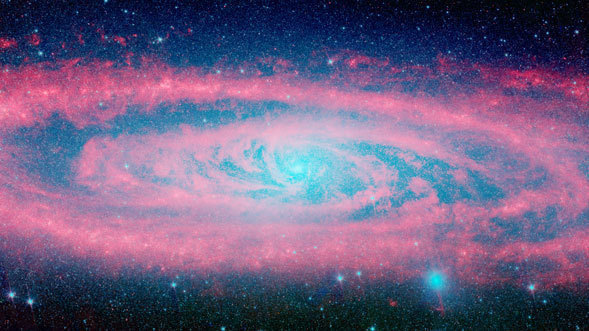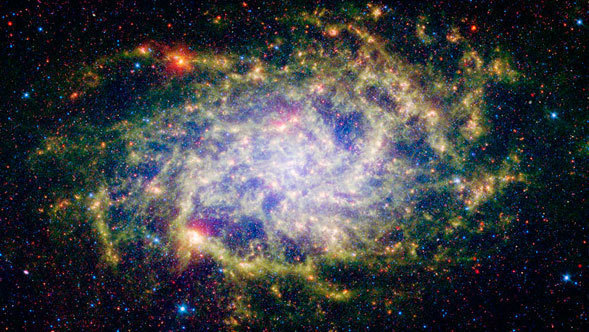We live within the Milky Way galaxy, a flattened disk of hundreds of billions of other stars, but the Milky Way is but one of trillions of galaxies that fill the observable universe. Spitzer’s infrared vision has helped us to more completely understand these immense objects that come in many shapes and sizes.
In the local universe Spitzer has traced out the underlying populations of stars within galaxies that range from cosmic pinwheels to nearly featureless beehives, and mapped the complex patterns of dust that propagate through many of them.
Cosmic dawn, when stars formed for the first time, occurred 250 million to 350 million years after the beginning of the universe, according to a new study led by researchers at UC Santa Cruz, the University College London, and the University of Cambridge.
In images from NASA's retired Spitzer Space Telescope, streams of dust thousands of light-years long flow toward the supermassive black hole at the heart of the Andromeda galaxy. It turns out these streams can help explain how black holes billions of times the mass of our Sun satiate their big appetites but remain "quiet" eaters.
The newly discovered feature offers insight into the large-scale structure of our galaxy, which is difficult to study from Earth’s position inside it.
Astronomers using NASA's Spitzer Space Telescope have found a stunning burst of star formation that beams out as much infrared light as an entire galaxy.
Peering into the "gut" of the galaxy Centaurus A, NASA's Spitzer Space Telescope has captured in unprecedented detail this massive galaxy's last big meal: a spiral galaxy twisted into a parallelogram-shaped structure of dust.
NASA's Spitzer Space Telescope has captured a stunning infrared view of Messier 31, the famous spiral galaxy also known as Andromeda.
Where there's smoke, there's fire -- even in outer space. A new infrared image from NASA's Spitzer Space Telescope shows a burning hot galaxy whose fiery stars appear to be blowing out giant billows of smoky dust.
The Pinwheel galaxy is gussied up in infrared light in a new picture from NASA's Spitzer Space Telescope.
NASA's Spitzer Space Telescope has captured an action-packed picture of the nearby Small Magellanic Cloud, a small galaxy that looks like a wispy cloud when seen from Earth.
On April 10, 2019, the Event Horizon Telescope (EHT) unveiled the first-ever image of a black hole's event horizon, the area beyond which light cannot escape the immense gravity of the black hole. That giant black hole, with a mass of 6.5 billion Suns, is located in the elliptical galaxy Messier 87 (M87). EHT is an international collaboration whose support in the U.S. includes the National Science Foundation.
While some galaxies are rotund and others are slender disks like our spiral Milky Way, new observations from NASA's Spitzer Space Telescope show that the Sombrero galaxy is both.
NASA's Spitzer, Hubble, and Chandra space observatories teamed up to create this multi-wavelength, false-colored view of the M82 galaxy. The lively portrait celebrates Hubble's "sweet sixteen" birthday.
The Andromeda galaxy, named for the mythological princess who almost fell prey to a sea monster, appears tranquil in a new image from NASA's Spitzer Space Telescope. The mesmerizing infrared mosaic shows red waves of dust over a blue sea of stars.
This new image of the Triangulum galaxy is being released as part of the 'Around the World in 80 Telescopes' event for the International Year of Astronomy.
A new image from NASA's Spitzer Space Telescope is helping astronomers understand how stardust is recycled in galaxies.
When the universe was only 700 million years old, some of its galaxies were already filled with lots of dust. But where did all of this dust come from? Astronomers using NASA's Spitzer Space Telescope think they may have found the source in type II supernovae, the violent explosions of the universe's most massive stars.
A pair of dancing galaxies appears dressed for a cosmic masquerade in a new image from NASA's Spitzer Space Telescope.
This false-color composite image of the Stephan's Quintet galaxy cluster clearly shows one of the largest shock waves ever seen (green arc), produced by one galaxy falling toward another at over a million miles per hour. It is made up of data from NASA's Spitzer Space Telescope and a ground-based telescope in Spain.
When galaxies collide (as our galaxy, the Milky Way, eventually will with the nearby Andromeda galaxy), what happens to matter that gets spun off in the collision's wake?
NASA salutes Space Day, observed this year on May 5, with a new dramatic image of the Sombrero galaxy. Space Day, held the first Thursday each May, is designed to inspire the next generation of explorers.
The astronomical community has received a new gift -- bundles of spruced up data from NASA's Spitzer Space Telescope. The data offer fresh infrared views of the universe, including dozens of images of galaxies and stars, and numerous chemical "fingerprints," or spectra, of planet-forming discs.
NASA's Spitzer Space Telescope has set its infrared sight on a major galactic collision and witnessed not death, but a teeming nest of life.
What would our Milky Way galaxy look like if we could travel outside it and snap a picture? It might look a lot like a new image by NASA's Spitzer Space Telescope of a spiral galaxy called NGC 7331 -- a virtual twin of our Milky Way.
